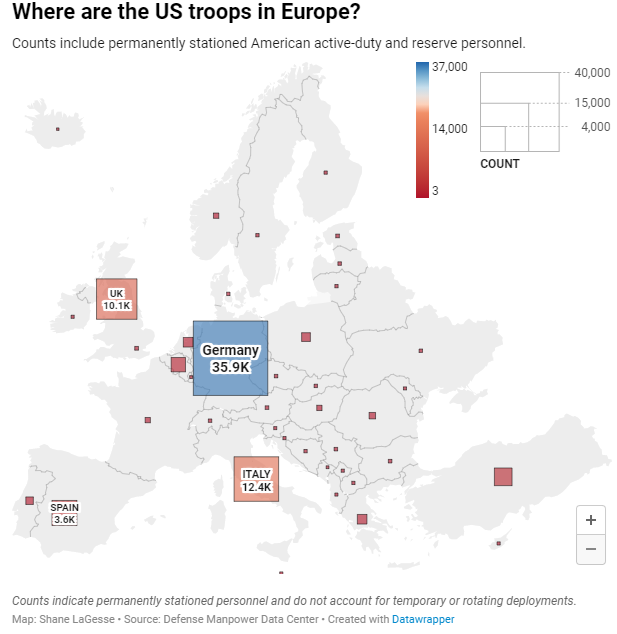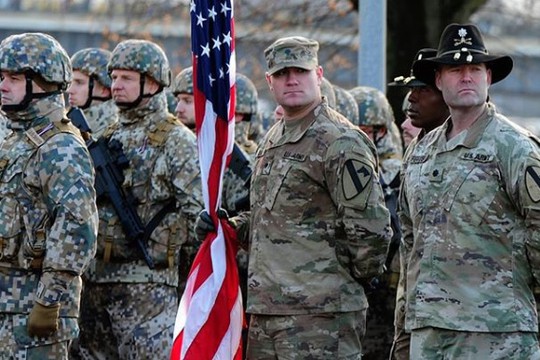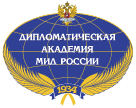Will American troops leave Europe?
Photo: useuworldaffairs.com
European NATO allies have begun private preparations for how the Alliance should handle a potential drawdown of US troops on the continent, despite Washington's limited indications of its plans. “It is not a question of whether there is a US drawdown,” one NATO diplomat said, “but how orderly it can be,” ‘Euractiv’ writes.
European NATO circles are convinced that US President Donald Trump will reduce the number of forces deployed in Europe, which currently amount to around 80,000, and redirect them to Asia and the Middle East.
For military planners, three key questions are driving discussions: How many US troops will leave, how abrupt the withdrawal will be and whether European forces are capable of replacing the departing American military capabilities.
“It is not a question of whether there is a US drawdown,” one NATO diplomat said, “but how orderly it can be done without jeopardising existing alliance defence plans.”
Reconsidering defence plans
NATO revamped its defence plans, which determine the Alliance's response to any potential attack, only last year. But those plans rely heavily on American hardware, airpower, and tens of thousands of troops to respond to any potential enemy.
NATO’s eastern flank is especially jittery about a sudden US pullback, which would likely prompt immediate requests for reinforcements from other allies.
Several of those countries have been privately urging NATO to bring talks on a review of its defence plans forward, to start preparation for the possibility that America will play a significantly smaller role.
A US withdrawal is also expected to affect core American military bases in Germany and Italy, which have been the backbone for supporting US forward military operations.
Defence officials in the region say European forces may be willing to fight, but they are still years away from being able to replace the current American forces – particularly with complex and costly capabilities such as US airpower, sophisticated logistics, and satellite systems.
Reversal of Biden-era deployment
After Russia’s full-scale invasion of Ukraine in 2022, then-President Joe Biden initially reinforced Europe with an additional 20,000 troops, bringing the total to around 80,000.
That's a far cry from Cold War levels, when US troops in Europe numbered around 400,000, but it is still a significant increase after years of slow reductions.
With Trump back in the White House, European allies have been discussing scenarios where 10,000 to 20,000 US troops are withdrawn.

Europe left in the dark so far
The US ambassador to NATO, Matthew Whitaker, said just ahead of the NATO summit that a Pentagon assessment of the US troop deployments in Europe was expected to be “completed by late summer or early fall".
Whitaker stressed that any changes would be done “in close coordination with NATO allies to make sure that there are no security gaps in the defence capabilities," and that any withdrawn American units could be replaced from within the alliance.
But European allies have still not received any kind of briefing from US officials about Washington's upcoming posture review, several European NATO diplomats confirmed.
That has left many European defence planners fearing snap decisions from the White House without transatlantic consultations. They haven't been reassured by comments from high-ranking Trump administration officials like Marco Rubio, who promised European counterparts earlier this year that “there will be no surprises".
Searching for signs of US intentions
Trump's nomination of Lt. Gen. Alexus G. Grynkewich as the new supreme allied commander in Europe offered some small symbolic assurance of continued US commitment. The role is traditionally held by an American, but there was uncertainty among NATO officials about what Trump would do with the role.
European NATO allies have closely watched US military shifts elsewhere in the world.
A recent reduction by US Africa Command (AFRICOM), which began under Biden, and Trump's withdrawal of US aid to allied African countries painted a bleak picture of how a European drawdown could unfold, European NATO diplomats say.
Washington for years has been stressing the need to "pivot" forces towards the Indo-Pacific region, but Trump's second term has also been marked by renewed American military involvement in the Middle East, punctuated by US airstrikes on Iran.
“It’s not only about the Indo-Pacific now, but now also increasingly the Middle East,” Lungescu said, adding both could “determine how fast this drawdown might need to happen.”
read more in our Telegram-channel https://t.me/The_International_Affairs

 9:59 07.07.2025 •
9:59 07.07.2025 •























